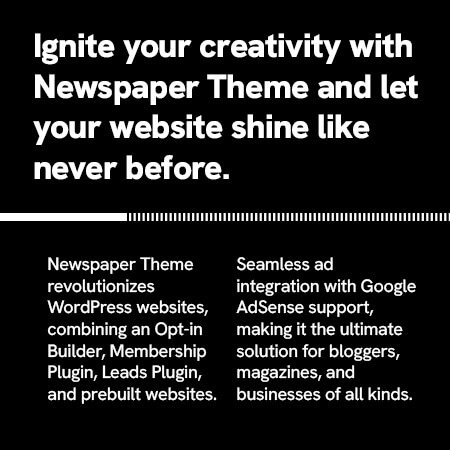In today’s fast-paced tech world, accessibility is often seen as a task to check off a list—a box to be ticked when a product is ready for launch. However, this approach overlooks a critical truth: lasting accessibility is not achieved through one-time efforts or isolated goals. Instead, it thrives in the context of systems and ongoing processes that are embedded into the very fabric of a project. The shift from focusing on goals to prioritizing systems is fundamental not only for effective habit-building but also for creating a truly accessible product.
The Trap of Focusing on Goals Alone
It’s tempting to fixate on a single, measurable goal, such as making an app “accessible” or meeting compliance standards. After all, achieving a goal feels satisfying—there’s a tangible end point, a clear measure of success. However, when accessibility is treated as a one-off goal, rather than an integral part of the design process, its benefits are often fleeting.
Consider the common scenario of commissioning an accessibility audit. A team might go through the motions of addressing the flagged issues—adjusting color contrast, adding alt text, ensuring keyboard navigability—all in an effort to comply with accessibility standards. While this can result in quick wins, the process is more like putting a Band-Aid on a deeper issue. The changes might work for a while, but as the software evolves—features are rewritten, old code is removed, and new functionality is added—accessibility issues often resurface.
The problem here is twofold: first, accessibility is treated as something external, something to be “fixed” by an expert audit, rather than something that is embedded into the daily workflow. Second, focusing solely on goals, rather than a continuous process, means that accessibility is relegated to the realm of last-minute fixes—tasks that become more expensive and complex as development progresses. The result? A cycle of patching, frustration, and eventual burnout.

Shifting the Focus to Systems
Instead of obsessing over a final goal, a more effective approach is to focus on systems—the ongoing, habitual processes that drive long-term change. In the context of accessibility, this means integrating inclusive design principles into every phase of development, from initial brainstorming to final testing. By creating a culture that prioritizes accessibility as part of the standard workflow, teams can avoid the pitfalls of treating it as a box to tick or a problem to address only when it arises.
For example, rather than waiting for an audit to identify issues, teams can adopt practices like user testing with people with disabilities, continuous code reviews that emphasize accessibility standards, and regular training to keep the team informed about evolving best practices. These are not one-time activities but rather ongoing processes that become ingrained in the team’s workflow.
This systems-based approach is sustainable because it ensures that accessibility is not an afterthought but a core value that evolves with the product. It also fosters a mindset where every team member—from developers to designers—understands their role in making the product accessible. This collective responsibility prevents accessibility from being relegated to a special project handled by a few individuals, and instead, it becomes part of the team’s ethos.
The Benefits of Systems Over Goals
When accessibility is viewed through the lens of systems rather than goals, the results are both more consistent and more impactful. One of the key benefits of this approach is that it leads to a product that is inherently accessible, rather than one that simply “complies” with standards for a short period of time. Accessibility becomes a natural part of the product’s evolution, which in turn makes it easier to maintain and improve over time.
Moreover, building systems around accessibility reduces the stress and urgency of last-minute fixes. Rather than scrambling to address accessibility issues just before launch or in response to an audit, teams can proactively identify and resolve potential barriers to access early in the development cycle. This not only makes the process smoother but also helps reduce costs—accessibility issues are far cheaper to fix when they are caught early, rather than when the product is near completion.
Additionally, by embedding accessibility into your team’s culture, you create a work environment where inclusivity is seen as a shared responsibility, rather than a burden. This leads to a more positive and productive workplace, where employees feel motivated to contribute to a cause that goes beyond just meeting deadlines or checking boxes.
Implementing a Systems-Based Approach
So how can you move from a goal-focused mentality to one that prioritizes systems? It starts with leadership. Leaders must set the tone by making accessibility a non-negotiable priority in every project. This includes ensuring that the team has the tools, resources, and training needed to incorporate accessibility into their daily tasks.
Start by embedding accessibility requirements into the design process. This means considering accessibility from the very beginning—during ideation, wireframing, and prototyping—not just when the product is near launch. Additionally, create a feedback loop by involving users with disabilities in the testing phases to gather real-world insights on how accessible the product truly is.
Also, ensure that there are clear, measurable systems for checking and improving accessibility throughout the development process. This could include regular accessibility audits (but not just as a last-minute fix), ongoing training for the team, and creating accessibility guidelines that are regularly updated as new standards emerge.
Finally, treat accessibility as a cultural value. This means making sure that everyone on the team—from the top down—understands why accessibility matters and feels personally responsible for ensuring the product is usable by everyone, regardless of ability.
A Lasting Commitment to Accessibility
By focusing on systems, you create a sustainable, long-term approach to accessibility that isn’t dependent on periodic audits or short-term goals. Accessibility becomes an intrinsic part of the product development process, resulting in a better experience for all users, regardless of their abilities. In turn, the product becomes more inclusive, and the team more engaged in its creation, leading to higher-quality, accessible designs that last.
In the end, the goal is not just to make a product accessible—it’s to make accessibility a natural, ongoing part of the way your team works. By prioritizing systems over goals, you set the stage for a product that evolves in a truly inclusive way.











